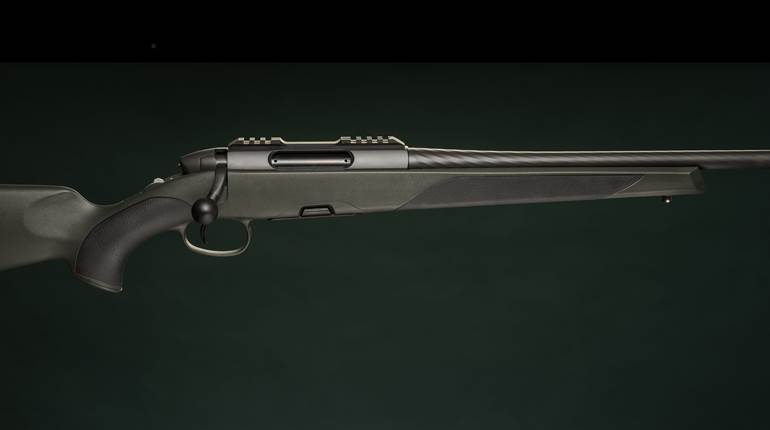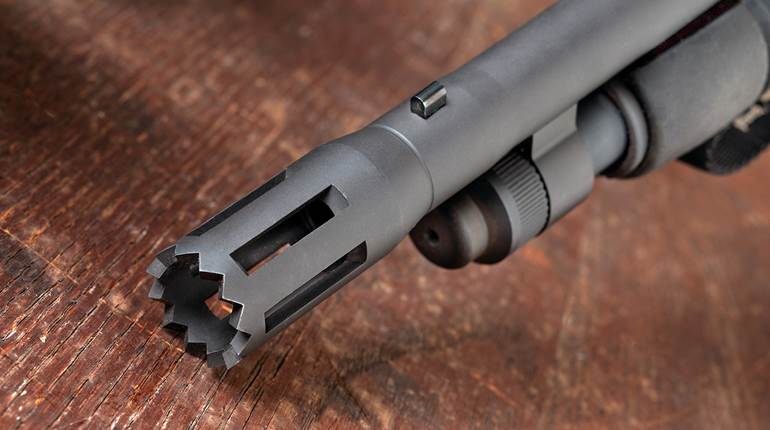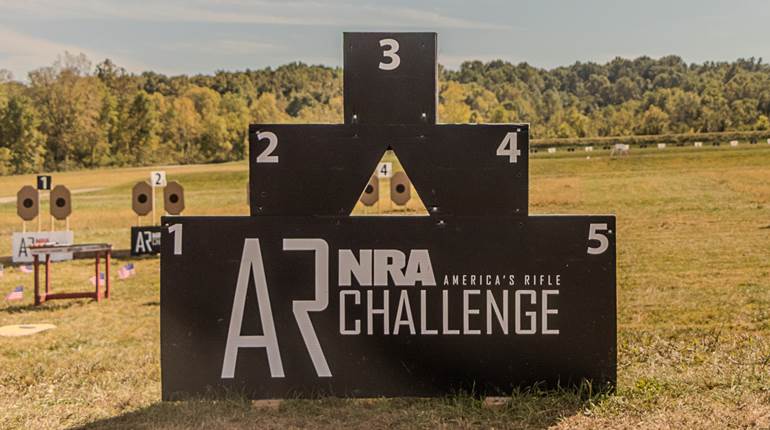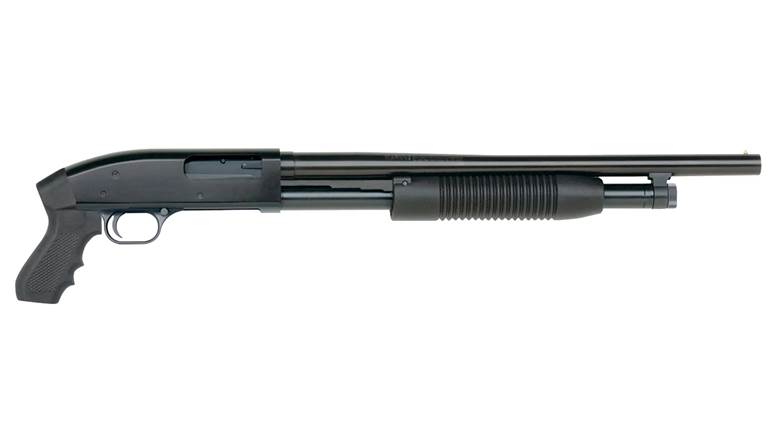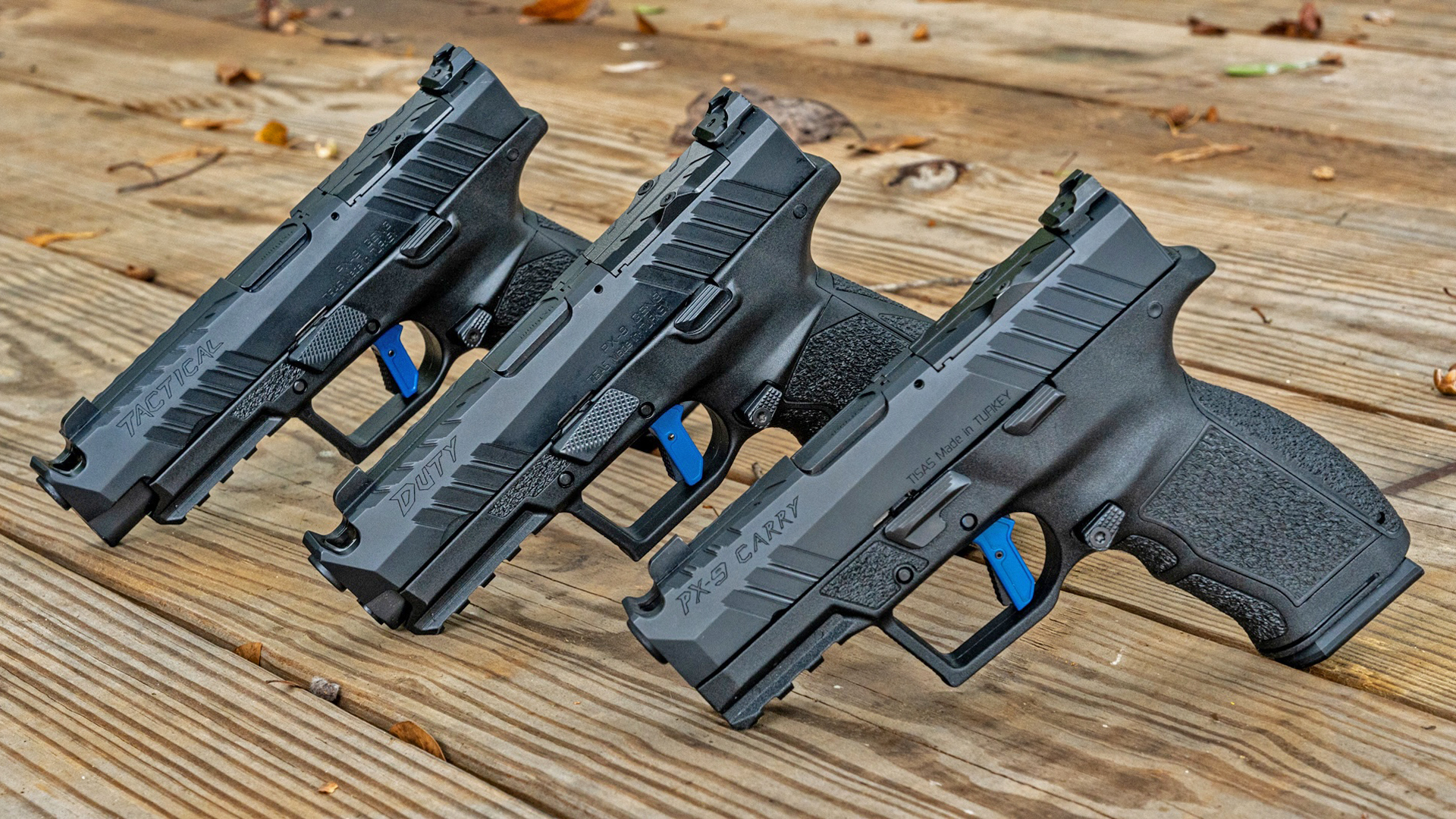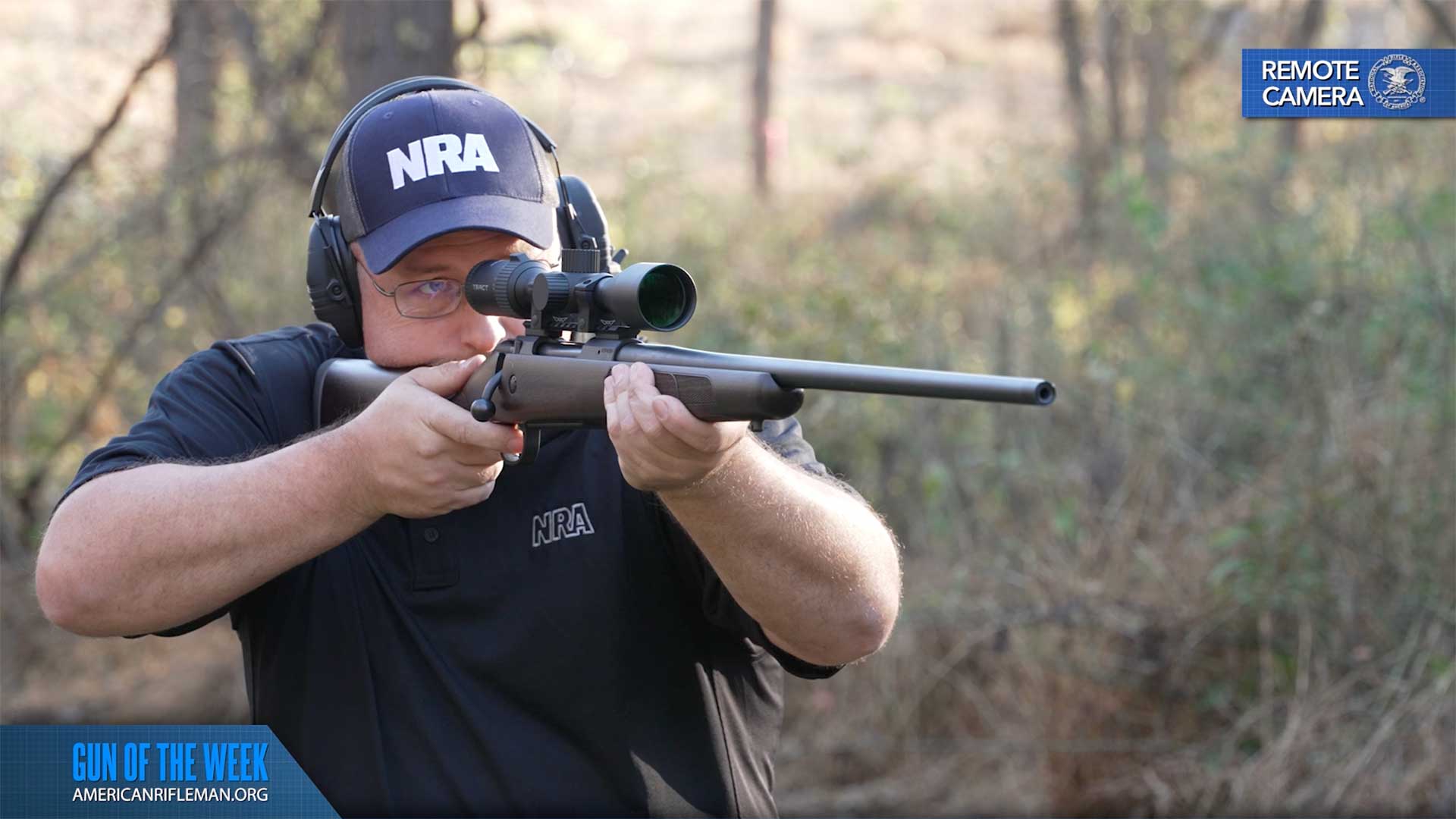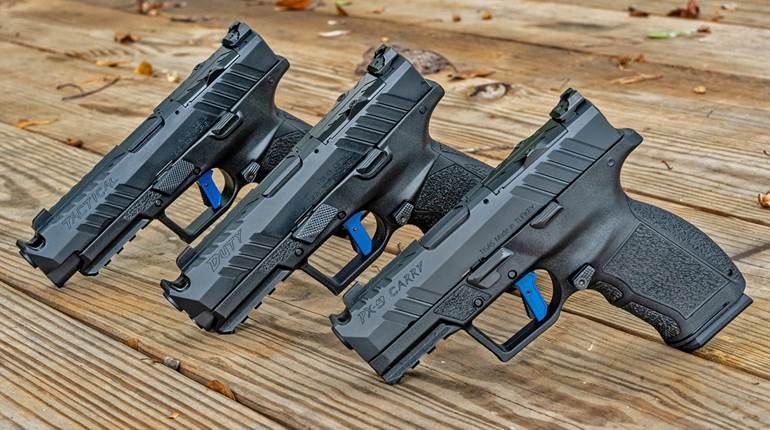
Hornady’s new 6mm ARC was designed for a specific military requirement; the 108-gr. ELD (l.) makes for an excellent long-range target round, while the 103-gr. ELD-X hunting load (shown here) penetrated nearly 18" into 10 percent ballistic gelatin.
Only a few years prior, this seemingly impossible task was the exclusive territory of the world’s largest shoulder-fired cartridges such as the .50 BMG, .408 CheyTac and .338 Lapua Mag.—whose huge projectiles had adequate exterior ballistics to provide this type of downrange energy. Such behemoths are not conducive to individual soldiers, however, because the guns and ammunition are prohibitively heavy and costly, their recoil/muzzle blast is punishing, and accuracy, well, could be better.

It was the Nebraska-based Hornady company that found a key to unlock and commercialize what a few benchrest shooters had been contemplating. That is, mid-size, heavy-for-caliber, long bullets with high ballistic coefficients (BCs) and sectional densities that could make up for their lack of mass and speed to outpace larger, faster bullets over distance.
What resulted was Hornady’s ELD (Extremely Low Drag) bullets, but they were little good by themselves. So Hornady tailored cartridges around them that integrated cutting-edge technology including: a beltless design that headspaces off the shoulder; a shoulder configuration that allows for the seating of bullets shallow in the case to minimize bullet wobble and to reserve case capacity for powder; chamber dimensions that allow seating long, protruding bullets deep into throats; fast-twist rifling that can stabilize them; and optimized powders and primers.
Together, those characteristics allowed Hornady to produce long-range cartridges that are inherently efficient and accurate and that outpace less aerodynamic cartridges exponentially as range increases. The tangible result was Hornady’s .300 PRC cartridge, and the military bit.
Evidently the Dept. of Defense (DoD) brass was so impressed that it ordered up another hush-hush project for one of its most elite units. Citing the obvious shortcomings of the 5.56x45 mm NATO and even the 6.8mm SPC that at one time was hyped to be the answer to those issues, the DoD was still searching for a bridge chambering between the 5.56 NATO and the 7.62x51 NATO that could counter an evolving enemy that, by proxy and via experience, has become proficient in riflery out to about 600 yds.
Hornady was tasked with developing a cartridge that could fit in an AR-15/M4’s magazine-constrained, 2.260" maximum cartridge overall length, be effective beyond 1,000 yds. from an 18" barrel and allow a magazine capacity comparable to the M4—yet exhibit significant weight reduction compared to the 7.62 mm NATO. The DoD wanted minimal recoil but also a bullet with a large enough splash that soldiers could see their impacts well enough to walk shots into long-range targets. Easy, right? Good thing it called Hornady and not the highway department, or else the project would be still be going, but I digress.

From the commercial perspective, Hornady believed it could build on its technology from the 6.5 Creedmoor project and piggyback off that success to create a ballistically superior cartridge that would: be optimized for America’s rifle, the AR; feature long-range capabilities in terms of energy, accuracy and minimal wind drift; and be capable of taking deer-size game to 500 yds. or more. “This wasn’t something that would make or break the company,” said Hornady’s Neal Emery. “But we do love these challenges.”
If a new cartridge could service the U.S.’s elite combat units, great, but if Hornady could simply push the envelope again for glory, country and profit, shouldn’t it? This is the private industry’s strength and what makes America great. Besides, there are plenty of hunters who love the AR-15 in both 5.56 NATO and .300 Blackout, but plenty also realize that it’s marginal at best for larger deer and hogs, especially beyond 100 yds.
The Answer: 6mm Advanced Rifle Cartridge
After much R&D, Hornady’s engineers and staff produced the 6mm ARC (Advanced Rifle Cartridge), a short, fat, PPC-looking round that’s very deceiving for the power that it actually contains. In a nutshell, Hornady took a 6.5 Grendel case, necked it down to 0.243" (6 mm) diameter and moved the 30-degree shoulder back 0.030" so the company’s long ELD bullets could be seated shallowly yet with its overall length still under 2.260". The company optimized (blended) powders for it and experimented with charges and bullet weights until engineers approved. From an 24" test barrel, the 6mm ARC launched a 108-gr. ELD Match bullet at 2800 f.p.s. for 1,880 ft.-lbs. of energy at the muzzle.
But now that you know about the 6mm ARC, you might be thinking, doesn’t the 6.5 Grendel with its heavier bullet but lower velocity accomplish the same thing from an AR-15? Is Hornady splitting hairs? Is this a marketing ploy?
“Absolutely not,” said Hornady ballistician Jayden Quinlan, who conceptualized the ARC. “The farther out your target is, the more advantage you’ll see. For the guy who’s shooting at 200 to 300 yards, he has the advantage of a bigger bullet selection over the Grendel. For the guy shooting beyond 300, there’s a distinct advantage in hit probability and wind deflection.”
Fact is, plenty of carbine gurus opine that the Grendel fell short in the category of long-range effectiveness, mainly because the long 6.5mm bullets consumed too much powder capacity of the little PPC-based case, and the round, therefore, does not quite have the horsepower (2475 f.p.s. from an 18" barrel) it needs for its 123-gr. ELD bullet to be effective much past 800 yds. (370 ft.-lbs. at 1,000 yds.). To become more efficient, the bullet would need to be longer and heavier, but the Grendel is at the end of its rope because longer bullets would have to be seated further into the case, robbing propellant space. Furthermore, ballisticians have learned that the deeper a bullet is seated into a case the greater the probability of it wobbling in flight, degrading accuracy, and that’s why, unlike the Grendel, the PRC’s and ARC’s bullets are seated so shallowly.
“On paper,” said Quinlan, “the .224 Valkyrie is tit-for-tat with the ARC. But hunting and warfare isn’t paper. In some states you can’t legally hunt big game with a .22 caliber; 6mm is the minimum. The bigger ARC also has a larger splash signature. Plus, in a .22, you’re limited by its tiny diameter on how you can design that bullet. But 6mm is the turning point where you can design a bullet to do what you want it to.”

All told, the 6mm ARC’s case, proprietary (i.e., secretive) high-tech powders and 108-gr., 0.536-BC bullet results in a projectile still doing 1358 f.p.s. at 1,000 yds. for 442 ft.-lbs. of energy with 342" of drop and a mere 83" inches of deflection from a 10-m.p.h., 90-degree wind (out of a 24" barrel). In the 103-gr. Precision Hunter ELD-X load, it’s touted at 2800 f.p.s. from a 24" barrel. That equates to 1,793 ft.-lbs. of muzzle energy and 411 ft.-lbs. at 1,000 yds.
That’s incredible, especially when you look at 7.62x51 NATO and 5.56x45 NATO numbers—even when compared to the similar-profile ELD bullets in Hornady loads. Consider that a 73-gr. ELD bullet from a 5.56 starting at 2700 f.p.s. results in just 157 ft.-lbs. of energy at 1,000 yds. with 393" of drop and 111" of deflection; a 168-gr. ELD Match from a .308 Win. starting at 2700 f.p.s. results in 635 ft.-lbs. of energy, 363" of drop and 89" of deflection—but we all know combat soldiers don’t shoot ELD bullets.
More likely, they’d shoot 168-gr. BTHPs that result in 501 ft.-lbs. of energy at 1,000 yds, just 59 ft.-lbs. more than the 6mm ARC that can be fired from a platform weighing 30 percent less than the M1A or AR-10. The cartridge itself weighs 30 percent less, so soldiers can either carry more ammunition or the same amount with less burden. And it performs with only 9.9 ft.-lbs. of free recoil energy (from a 6-lb., 8-oz. 6mm ARC rifle) compared to 18.2 ft.-lbs. free recoil energy (from an 8-lb., .308 Win. rifle). Lighter ammunition, lighter guns and less recoil mean less fatigued, more accurate soldiers who can hit the enemy from distances further than the enemy can kill them.
But this, too, is all on paper. I recently received CMMG’s Resolute 300 Mk4 carbine chambered in 6mm ARC for real-world testing, and what follows is what I found.

ARC On The Range And Ranch
First off, the Resolute 300 is, much like most thin-to-medium-taper ARs, a joy to shoot and handle. At a hair under 6 lbs., 8 ozs., with a full-length aluminum M-Lok handguard and Magpul MOE grip, it feels like the lithe ARs we’ve come to love, yet it’s nicer than most. A crisp, 4-lb., 10-oz. trigger, ambidextrous charging handle, forged upper, custom-looking Bazooka Green Cerakote finish, a rifle-length gas tube and an innovative all-aluminum, yet comfortable, collapsible RipStock buttstock make it stand out among the crowd. Yet there is one main reason I love my particular Resolute: It’s chambered in 6mm ARC.

You see, hardly a day goes by in my neck of Oklahoma where I don’t see a wild hog, a coyote, a steel target in a pasture or something else that needs shooting. And while I’ve plugged passels of pigs with a .223 Rem., I’m ashamed to say I’ve also wounded a few. Fact is, the .223/5.56mm is too light for big boars, and it stinks for deer much past 100 yds.—or anytime shot placement is less than ideal or the angle is severe. Same goes for the .300 Blackout. A semi-automatic 6.5 Creedmoor is perfect, as is a .308 Win. around here, but the 10-lb. AR-10s (fully loaded with scope) are awfully heavy and cumbersome. Getting .243 Win.-type ballistics from an AR-15—a gun I can easily suppress, mount a night-vision optic onto and take varmint hunting yet be adequately armed if a 250-lb. pig pokes its snout from the brush at 400 yds.—now you’re talking!
Just before dark one evening, I saw a giant boar rooting my beans, so I slipped to 160 yds. and shot it just behind the shoulder. It ran about 70 yds. before piling up. An autopsy revealed a complete double-lung pass-through, despite the ELD Match bullet not being ideal for big game. It was all I had, as the 103-gr. ELD-X Precision Hunter load was not yet available at the time of the shot—it is now, though. Still, it was great performance considering the boar weighed 276 lbs. I later shot the dead boar with a full-power .300 Blackout at 100 yds. as a test, and it didn’t pass through.

At the bench, the 108-gr. load averaged 2633 f.p.s. through my chronograph, no less from the Resolute’s 16", 1:7.5"-twist barrel. The 103-gr. Precision Hunter load recorded a 2671 f.p.s. average velocity, which, of course, is well below its 2800 f.p.s. touted velocity with a 24" barrel—but still impressive for a carbine. This results in 1,632 ft.-lbs. of muzzle energy and more than 1,000 at 300 yds. At 1,000 yds., it results in 368 ft.-lbs. of energy with 378" inches of drop and 93" inches of 10-m.p.h., 90-degree deflection. According to Hornady, real-world numbers with a 24" barrel at the muzzle will likely be around 2740 f.p.s.

Accuracy-wise, the CMMG consistently shot sub-1" groups at 100 yds. for the first three shots, but if I fired quickly, it would begin stringing the fourth and fifth shots vertically so that five-shot groups stretched to 1.6". If I let the barrel cool several minutes between rounds, my five-shot groups shrunk back down to 1.2". Keep in mind, however, that this cartridge is so new that I only had two loads—the only two available at the time—to test. I’d sure like to see how the ARC performs in a benchrest-style, micro-length bolt gun as well. With 5 lbs. of recoil from a 12-lb., 1,000-yd. rifle, that’d sure be fun.

Even after installing an AB Suppressor on the Resolute, I experienced no jams, misfeeds or failures to fire in more than 400 rounds, proving the round and the CMMG’s bolt and chamber specs are sound, as well as the Resolute’s overall reliability. Ultimately, I added Dueck offset ghost-ring sights, an Armageddon sling and a Magpul bipod to the carbine, and, as such, it’s just about the ultimate, lightweight, do-all-rifle and chambering for me. With a swap to a red-dot sight, I can’t think of a finer home-defense carbine, either.
 But do I think the 6mm ARC is the end-all cartridge? No, because I love to see any and all small arms innovation, and I’m sure something great will follow. Would I buy it if I already had a Grendel? Maybe, maybe not, depending on if it becomes popular enough that ammunition and a healthy selection of loads can be readily found. At the time of this writing, the following manufacturers are supporting 6 mm ARC: Adams Arms, APF Armory, Barrett, Brownells, Christensen, CMC Triggers, CMMG, GAP, Geissele, Howa, Lantac, Mile High Shooting Accessories, Mossberg, NEMO, Noveske, Odin Works, Proof Research, Radical Firearms, Ruger, SanTan Tactical, Seekins Precision, Uintah Precision and Wilson Combat. I do, however, think it’s the best all-around cartridge for the AR to date; better than the .223 Rem., 6.5 mm Grendel, 6.8 SPC and .300 Blackout, and evidently Hornady and I aren’t the only ones who think so.
But do I think the 6mm ARC is the end-all cartridge? No, because I love to see any and all small arms innovation, and I’m sure something great will follow. Would I buy it if I already had a Grendel? Maybe, maybe not, depending on if it becomes popular enough that ammunition and a healthy selection of loads can be readily found. At the time of this writing, the following manufacturers are supporting 6 mm ARC: Adams Arms, APF Armory, Barrett, Brownells, Christensen, CMC Triggers, CMMG, GAP, Geissele, Howa, Lantac, Mile High Shooting Accessories, Mossberg, NEMO, Noveske, Odin Works, Proof Research, Radical Firearms, Ruger, SanTan Tactical, Seekins Precision, Uintah Precision and Wilson Combat. I do, however, think it’s the best all-around cartridge for the AR to date; better than the .223 Rem., 6.5 mm Grendel, 6.8 SPC and .300 Blackout, and evidently Hornady and I aren’t the only ones who think so.
In June, the U.S. Department of Defense adopted the 6mm ARC cartridge. No one knows how it will be received by hunters and shooters in the months and years to come, but I do know that the hogs, coyotes and steel targets around my place are in a heap of trouble.












